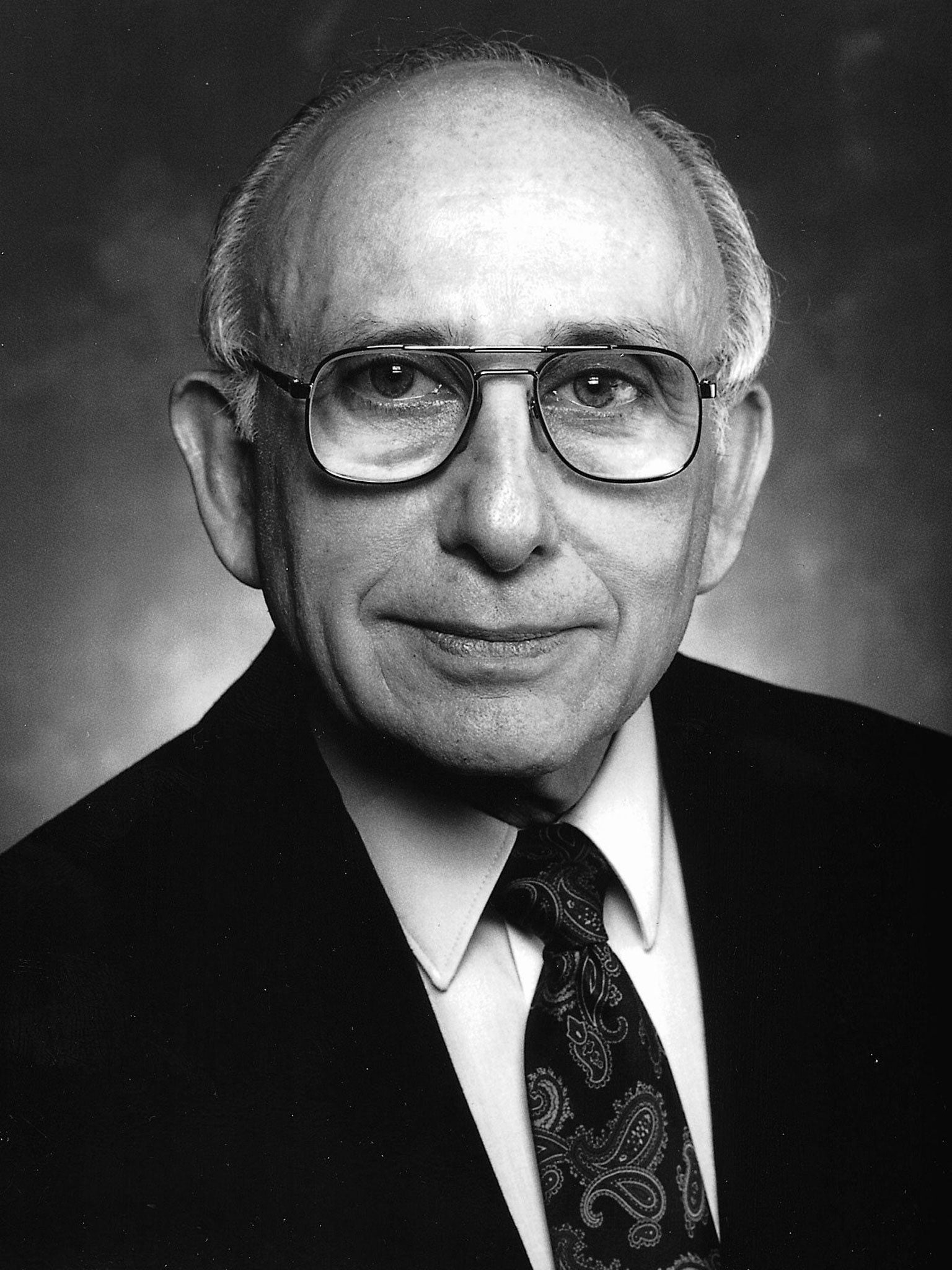
Norman Joseph Woodland was an inventor who was ahead of his time. His creation, the barcode, was first devised in 1949, the result of a fortuitous coincidence and some inspired thinking. However these now ubiquitous black-and-white stripes were not put into full use until 25 years later, due to the limitations of the technology available.
Woodland was born in Atlantic City, New Jersey in 1921 and studied mechanical engineering at Philadelphia's Drexel University. When war broke out he joined the Army, working with the Manhattan Project, which developed the first atomic bomb. After the war he rejoined Drexel, where he graduated and taught.
One day in 1948, a supermarket executive visited the university campus. In discussions with the Dean he described his wish for a simple way to put codes on products, for easy sorting, pricing and checking-out. Woodland's colleague, Bernard Silver, overheard the conversation and the pair set to work on finding a possible solution.
That winter Woodland spent time at his grandparents' home in Miami. While sitting on the beach he ran his fingers through the sand, making dot and dash marks, like the Morse code he had learned as a Boy Scout. He recalled in a 1999 interview with Smithsonian magazine, "What I'm going to tell you sounds like a fairy tale. I poked my four fingers into the sand and for whatever reason, I didn't know, I pulled my hand toward me and drew four lines. I said: 'Golly! Now I have four lines, and they could be wide lines and narrow lines instead of dots and dashes'. Only seconds later I took my four fingers, they were still in the sand, and I swept them around into a full circle." This was his eureka moment: Woodland realised that it would be possible to encode information using simple lines on paper to signify different numbers.
The application for US Patent 2,612,994 was filed by Woodland and Silver in October 1949 and described in detail an "...automatic apparatus for classifying things according to photo-response to lines and/or colors which constitute classification instructions...", going on to observe presciently, "One application of the invention is in the so-called 'super-market' field."
The initial design of the bar code was as a pattern containing a series of concentric circles, resembling tree-rings, with the width of the ring being used to encode the information. The patent was granted three years later, sold for $15,000 to the company Philco, which in turn resold it to the Radio Corporation of America (RCA).
The challenge – and stumbling block – at the time for anyone wanting to make a usable barcode scanner was to find equipment that would permit scanning of objects but be able to fit on a supermarket check-out. So when Woodland joined the computer company IBM in 1951, his idea remained dormant and RCA's patent expired in 1969.
During the early 1970s, advances in technology meant that the invention could be produced at a reasonable size and price. Still at IBM, but now at Raleigh, North Carolina, Woodland worked with colleagues at the company's laboratories to turn his two-decade-old dream into reality. It was the advent of the laser that made the most significant contribution to their task. By shining laser light on to a pattern of printed stripes – by now bar-shaped rather than circular – then measuring the reflected pattern, a numerical code could be read.
What was also needed was a standard for representing the code and for matching that code to the inventory of products available in a supermarket. In 1971 an IBM employee, George J Laurer, was given the job of defining an encoding system, the Universal Product Code (UPC), which was developed over the next two years and went on to become a worldwide standard.
In June 1974 at a supermarket in Ohio a packet of Wrigley's chewing gum bearing the new barcode was the first object to pass through a check-out scanner. The packet is now on display at the National Museum of American History.
Woodland received the National Medal of Technology from President George HW Bush in 1992 in recognition for his invention and last year he was jointly inducted into the National Inventors Hall of Fame, together with his late colleague, Bernard Silver. In October this year, a ceremony took place recognising Drexel as the "The Birthplace of the Barcode".
Dr Moshe Kam, Department Head of Electrical and Computer Engineering at the university, spoke at the event of an "important invention", which epitomises "mastery of the state of the art; innovation in the service of the public; a good sense of the practical and of what new technology can do to improve human welfare; solid vision regarding the expected progress of applied science and engineering; and understanding of commercial potential of new technology and the markets."
Woodland's invention is now used some five billion times a day to scan products, vehicles, patient records – and in future, perhaps even people.
Marcus Williamson
Norman Joseph Woodland, engineer and inventor: born Atlantic City, New Jersey 6 September 1921; married 1951 Jacqueline Blumberg (two daughters); died Edgewater, New Jersey 9 December 2012.
Subscribe to Independent Premium to bookmark this article
Want to bookmark your favourite articles and stories to read or reference later? Start your Independent Premium subscription today.

Join our commenting forum
Join thought-provoking conversations, follow other Independent readers and see their replies